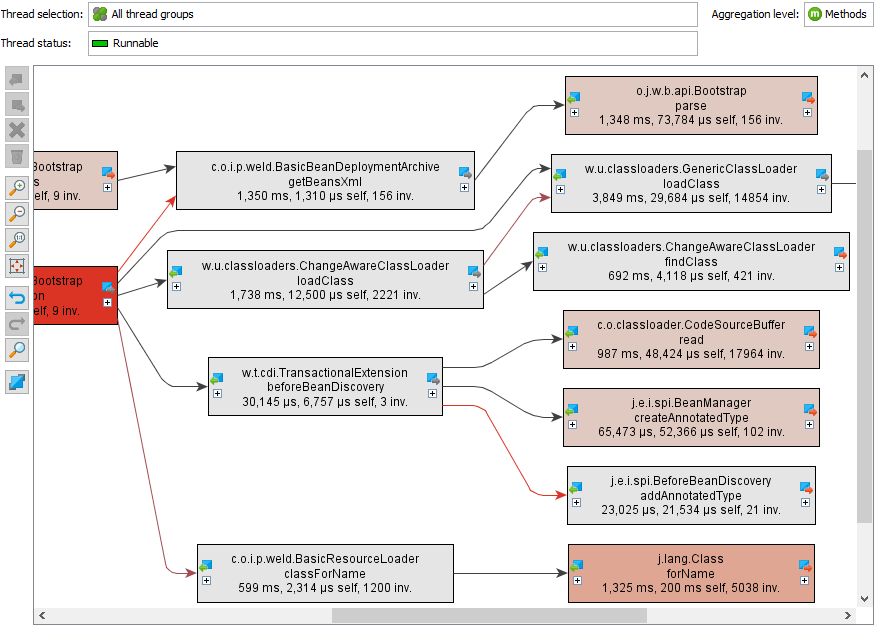
There is also a Run with Profiler icon on the main toolbar.

Starting the app with a profiler is simple: in the gutter, click the Run icon near the entry point of your application and select the required profiling tool. When we run the program, we find that it doesn’t perform up to our expectations: Average count: 3527 op This workflow is supposed to help us understand how well or poorly our application performs. This makes it possible to find out how many events occurred during this time interval by just querying the collection. We measure the throughput using an improvised benchmark.Įvery time a task runs, the benchmark logic stores the current timestamp to a collection and removes all timestamps that point to a time earlier than the current time minus some interval. If an attempt fails, no exception is raised. It repeatedly tries to create a path in the file system (we use createDirectories() from NIO2 for that). Let’s say we have the following application. In the example below, we’ll see how we can benefit from profiling even when dealing with very simple apps.
#Jprofiler intellij how to#
Many people believe that they don’t need to learn how to profile as long as they don’t write high-load applications. You can attach either of them to a Java process and view the profiling report directly from IntelliJ IDEA.


The profiler, on the other hand, offers a bird’s-eye view of arbitrarily large execution chunks.
#Jprofiler intellij full#
The debugger is very precise and gives you full and granular control over the execution of the program, which allows you to reproduce intricate failure conditions. Two particularly helpful tools for examining the program at runtime are the debugger and profilers. Verifying any guesses you have can prove to be a tough task without the right tools at hand. Of course, you cannot learn about all the bugs and inefficiencies by just looking at the code, because things get more complicated at runtime. Some of these details can be provided at design time, as IntelliJ IDEA provides you with all sorts of clues that can be produced statically.
#Jprofiler intellij code#
Other times, you just want to know how code behaves at runtime, determine where the hot spots are, or figure out how a framework operates under the hood. Sometimes your app works, but you want to increase performance by boosting its throughput or reducing latency.


 0 kommentar(er)
0 kommentar(er)
